
The Commodore 1581 is a 3½-inch double-sided double-density floppy disk drive that was released by Commodore Business Machines (CBM) in 1987, primarily for its C64 and C128 home/personal computers.
The drive stores 800 kilobytes using an MFM encoding but formats different from the MS-DOS (720 kB), Amiga (880 kB), and Mac Plus (800 kB) formats.
With special software it’s possible to read C1581 disks on an x86 PC system, and likewise, read MS-DOS and other formats of disks in the C1581 (using Big Blue Reader), provided that the PC or other floppy handles the “720 kB” size format.
This capability was most frequently used to read MS-DOS disks. The drive was released in the summer of 1987 and quickly became popular with bulletin board system (BBS) operators and other users.
Specifications:
- Onboard CPU: MOS Technology 6502 @ 2 MHz
- RAM: 8 kB
- ROM: 32 kB
- Disk controller: WD1770 or WD1772
- Communications controller: MOS Technology 8520A
- Transfer protocols: Standard and fast serial; burst mode; and commands for parallel interface (the latter not used)
- Disk type: 3.5″ inch
- Storage format: MFM, double density, double-sided
- Interface: CBM’s proprietary serial IEEE-488
- Power: 5 V @ 1 A (5 VA) – 12 V @ 0.5 A (6 VA)
Gallery:
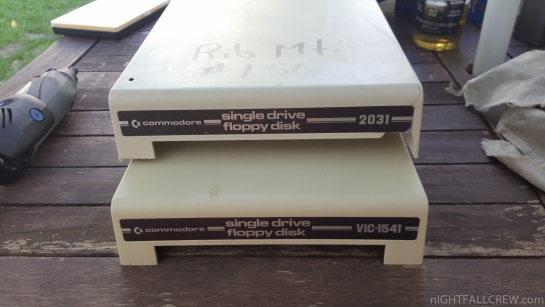
I have sacrificed a Floppy Disk Drive Commodore VIC 1541 to give a new look to a Floppy Disk Drive Commodore 2031 (IEEE-488).
It ‘s not been an easy job, but i’d say the result is very good.
Gallery:
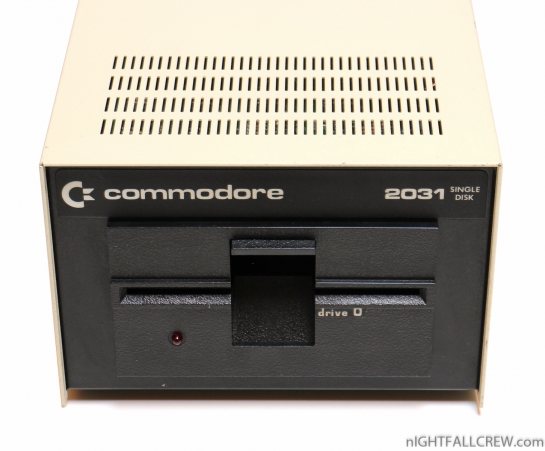
The Commodore 2031 and Commodore 4031 are single-unit 5¼” floppy disk drives for Commodore International computers. They use a similar steel case form to the Commodore 9060/9090 hard disk drives, and use the IEEE-488 interface common to Commodore PET/CBM computers. Essentially, both models are a single-drive version of the Commodore 4040.
The Commodore 2031LP is functionally the same as the 2031, but used the lower-profile tan case of the second version of the Commodore 1541 floppy disk drive intended for home computer use.
These drive models use a single-density, single-side floppy data storage format similar to that used by the Commodore 1540 & Commodore 1541 drives, but with a slightly different data marker indicating which model originally formatted the disk. The low-level disk format is similar enough to allow reading between models, but different enough that one series of drive models cannot reliably write to disks formatted with one of the other model series. A different of one extra ‘header’ byte is what causes this write incompatibility.
Gallery:
Comparison Commodore Floppy Drive 2031 (Low Profile) & 2031 (High Profile):
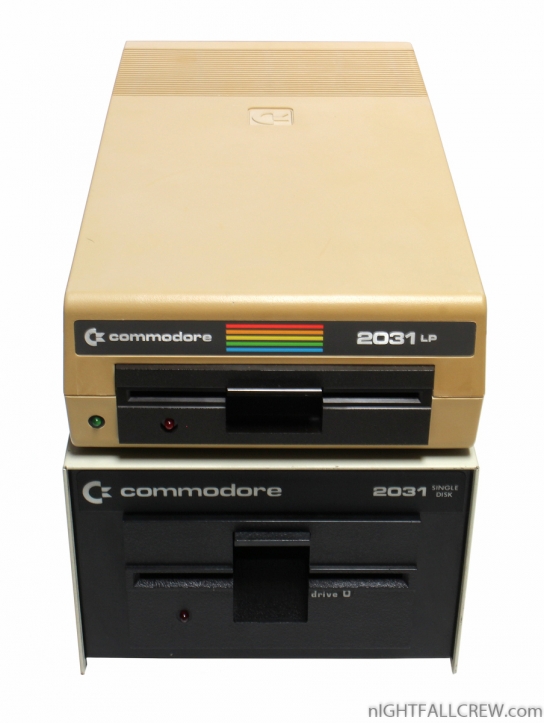
Fix the Commodore Floppy Drive 2031 (High Profile)
Removed the filter capacitors RIFA in the power plug.
Download: Commodore Floppy Drive 2031LP/HP Rom (1280)
source: wikipedia
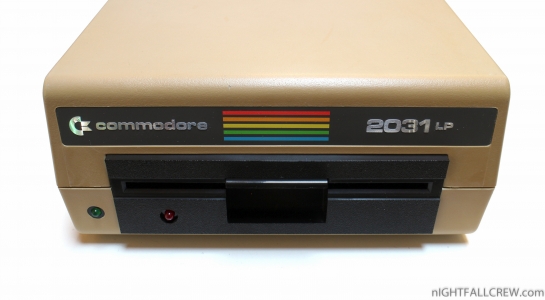
The Commodore 2031 and Commodore 4031 are single-unit 5¼” floppy disk drives for Commodore International computers. They use a similar steel case form to the Commodore 9060/9090 hard disk drives, and use the IEEE-488 interface common to Commodore PET/CBM computers. Essentially, both models are a single-drive version of the Commodore 4040.
The Commodore 2031LP is functionally the same as the 2031, but used the lower-profile tan case of the second version of the Commodore 1541 floppy disk drive intended for home computer use.
These drive models use a single-density, single-side floppy data storage format similar to that used by the Commodore 1540 & Commodore 1541 drives, but with a slightly different data marker indicating which model originally formatted the disk. The low-level disk format is similar enough to allow reading between models, but different enough that one series of drive models cannot reliably write to disks formatted with one of the other model series. A different of one extra ‘header’ byte is what causes this write incompatibility.
Gallery:
Repair/Restoration Commodore Floppy Drive 2031LP
Defect:
- Lock lever of the Floppy Drive broken.
- When the Floppy Drive is powered up, red LED stays on and spindle motor runs continuously.
Repair/Restoration:
- Replaced the Lock lever with a new one taken from a Commodore Floppy Drive 1541 (spare parts)
- Replaced the ROM (UAB5 901484-05) with a EPROM MCM 68766 supplied from my friend Giacomo Vernoni.
Note:
The Eprom programming was done with a EPROM programmer Promenade by Jason-Ranheim Co. for Commodore 64.
Repair/Restoration Gallery:
Download: Commodore Floppy Drive 2031LP/HP Rom (1280)
source: wikipedia
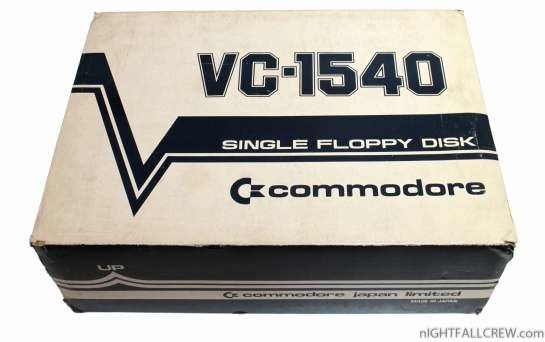
The Commodore 1540 (also known as the VIC-1540) introduced in 1982 is the companion floppy disk drive for the Commodore VIC-20 home computer. It uses single-sided 5¼” floppy disks, on which it stores roughly 170 kB of data utilizing Commodore’s GCR data encoding scheme. The launch price in Germany was 1898 DM (approximate 970 EUR). The US-American version is named VIC 1540 and the German version VC 1540.
Because of the low price of both the VIC-20 and the 1540, this combination was the first computer with a disk drive to be offered on the US market for less than $1000 USD, although the combination of the Commodore 64 and 1541 would prove more enduring. The 1540 is an “intelligent peripheral” in that it has its own MOS Technology 6502 CPU (just like its VIC-20 host) and the resident Commodore DOS on board in ROM – contrary to almost all other home computer systems of the time, where the DOS was loaded from a boot floppy and was executed on the computer’s CPU.
Due to a timing conflict with the C64′s video chip, the C64 doesn’t work properly with the 1540. The better-known 1541 is mechanically and nearly electronically identical to the 1540 but has a revised ROM that permits it to work with the C64 by slowing the drive down slightly. However, it is possible to revert the 1541 into 1540 mode with a Commodore BASIC software command (OPEN 15,8,15, “UI-” : CLOSE 15) to permit better speed when used with a VIC-20.

The 1540 is relatively rare. While cheaper than most other drives of the day, it was more expensive than the VIC-20 computer itself, and the disk media was also still relatively pricey. Also, the relatively small memory of the VIC meant that the faster program loading times of the drive did not gain more than a few seconds compared to tape media. Thirdly, almost all commercial software for the VIC-20 was sold on cartridge or cassette tape media, giving low incentive to buy a floppy drive. The C64 followed close on the heels of the VIC-20, quickly discontinuing the 1540. Most 1540s still in existence were modified with a 1541 ROM so it would work with a C64. Unmodified 1540s are now considered collector’s items.
Gallery:
source: wikipedia
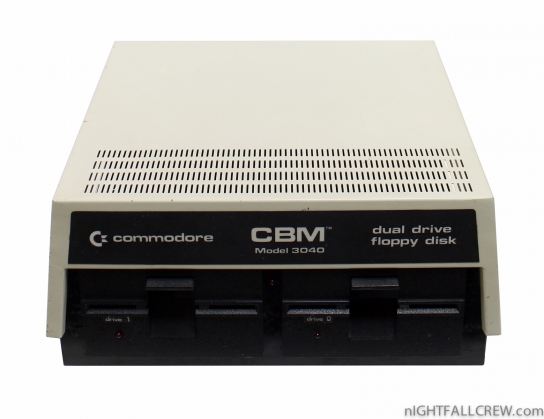
The Commodore 3040 it’s a dual drive 5¼” floppy disk subsystem for Commodore International computers. It uses a wide case form, and uses the IEEE-488 interface common to Commodore PET/CBM computers.
These drive models use a similar single density, single side floppy data storage format to that used by the Commodore 1541 drive, but with a slightly different data marker indicating which model originally formatted the disk. The low-level disk format was similar enough to allow reading between models, but different enough that one series of drive models could not reliably write to disks formatted with one of the other model series.
Gallery before cleaning:
Cleaning cover lock & replaced tantalum capacitors:
Gallery:
Download: CBM 2040-3040-4040-8050 Disk Drive Manual (2269)
source: wikipedia
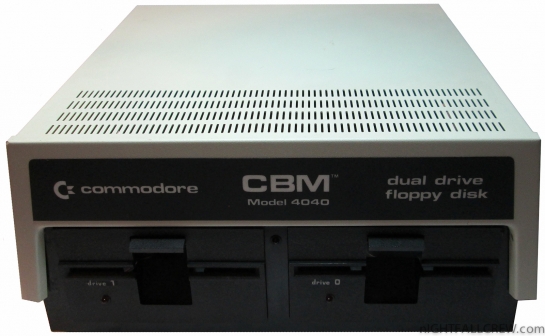
I must thank Davide M. for the donation.
Gallery:
The Commodore 4040 is the replacement for the previous models 2040 (USA) and 3040 (Europe). It’s a dual drive 5¼” floppy disk subsystem for Commodore International computers. It uses a wide case form, and uses the IEEE-488 interface common to Commodore PET/CBM computers.
These drive models use a similar single density, single side floppy data storage format to that used by the Commodore 1541 drive, but with a slightly different data marker indicating which model originally formatted the disk. The low-level disk format was similar enough to allow reading between models, but different enough that one series of drive models could not reliably write to disks formatted with one of the other model series.
Download: CBM 2040-3040-4040-8050 Disk Drive Manual (2269)
Testing the Floppy Drive with the ZoomFloppy interface:
source: wikipedia

The conditions of this Commodore Dual Disk 8250 LP are really bad. The CBM 8250 LP is left for over 25 years in a dovecote.
The cleaning, repairing and restoration have taken a long time, but the result is more than acceptable.
The comparison (before / after):
Defects:
- Floppy Disk Drive completely dead.
- Main motherboard failure: Status LED green but with the Floppy Disk Drive LEDs (red) that blink 3 times and then repeat in loop.
- Directory displayed with extra chars.
Repair:
- Replaced all the electrolytic capacitors of the two Floppy Disk Drive.
- Replaced the IC RIOT MOS 901869-01 (Memory, I / O, Timer array)
- Replaced the IC RIOT MOS 6532 (RAM-I/O-Timer)
Gallery of repair and cleaning:
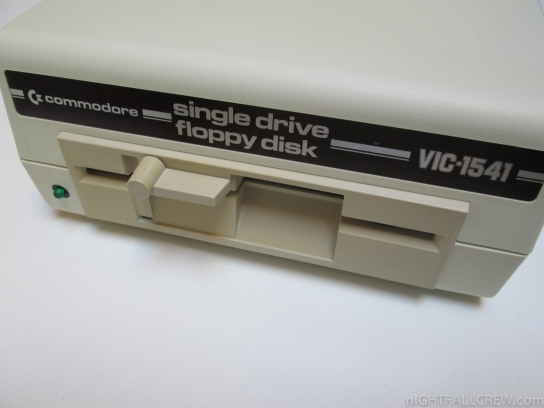
Autopsy:
This Floppy Drive VIC-1541 (brown label with white case) unlike the known model of VIC-1541 uses a drive mechanism of Newtronics/Mitsumi White and not the usual ALPS brown.
The drive mechanism probably was replaced over the time but i have published the photos anyway.
from Wikipedia homepage:
The Commodore 1541 (also known as the CBM 1541 and VIC-1541) is a floppy disk drive (FDD) which was made by Commodore International for the Commodore 64 (C64), Commodore’s most popular home computer. The best-known FDD for the C64, the 1541 was a single-sided 170 kilobyte drive for 5¼” disks. The 1541 followed the previous Commodore 1540 (meant for the VIC-20).
The disk drive used Group Code Recording (GCR) and contained a MOS Technology 6502 microprocessor, doubling as a disk controller and on-board disk operating system processor. The number of sectors per track varied from 17 to 21 (an early implementation of Zone Bit Recording). The drive’s built-in disk operating system was CBM DOS 2.6.
source: wikipedia
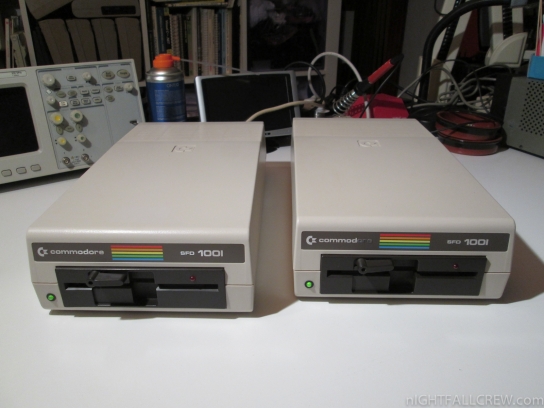
This gallery shows some stages of the repairing of the two Floppy Drives Commodore SFD-1001.
Defects found on the two Floppy Drives:
- Both floppy drives had the capacitors that leaked acid on the motor control pcb.
- Both floppy drives had the closing arm cracked.
The difficulty was rebuild the tracks of the pcb and remove the most of the leaked acid of the capacitors. Unfortunately on the aesthetic level this type of repair are not perfect, but i’m glad that now work.
To test the correct operation of the Floppy Drives i have used a Commodore CBM (PET) 2001, and a Commodore CBM 610.
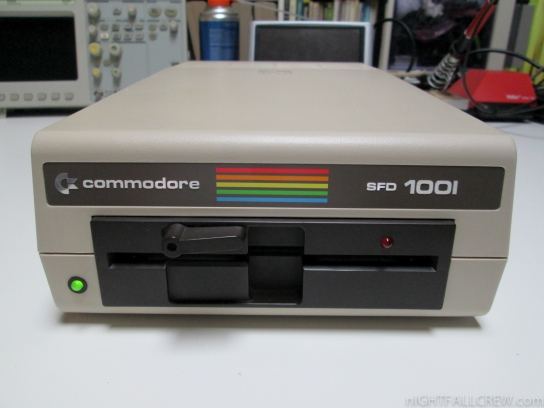
Autopsy:
from C64-Wiki Homepage:
The Commodore disk drive SFD-1001 was build in 1984/85. It has got a storage capacity up to 1 MByte (1.066.496 bytes equals 4166 blocks, ca. 4100 useable) for 5,25″-disks and it has got a IEEE-488 interface.
The data transfer is parallel. Also it is 5-times faster (ca. 1500 bytes/s) than the floppy VIC-1541. It can also used on CBM-PETs and with the right connector (cartridge) on C64/128, too.
The disk drive has build in the Commodore-DOS 2.7 version.
Download: 8250LP (SFD-1001) Disk Drive Technical Manual (1688)
source: c64-wiki.com
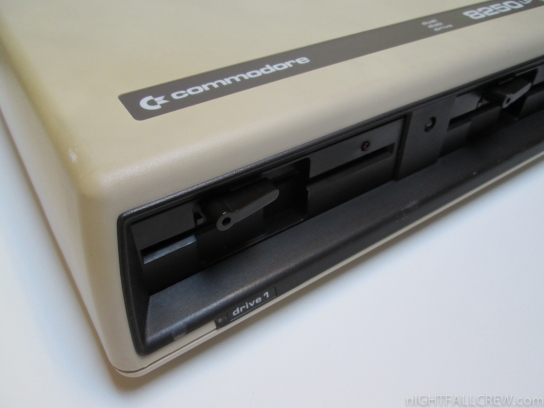
Autopsy:
from Wikipedia:
The Commodore 8050 and Commodore 8250 were dual unit 5¼” floppy disk drives for Commodore International computers. They used a wide rectangular steel case form similar to that of the Commodore 4040, and used the IEEE-488 interface common to Commodore PET/CBM computers.
The 8050 was a single sided drive, whereas the 8250 could use both sides of a disk simultaneously. Both used a “quad” density format storing approximately 0.5 megabyte per side. The density of media was similar to later PC high density floppy disks, but the 8050 and 8250 could not use PC high density disks reliably. Since “quad” density disks were rare even at the time, users quickly found that typical double density floppy disks had enough magnetic media density to work in these drives.
These drives were not dual mode, so they could not read or write disks formatted by the more common lower capacity Commodore 1541 or Commodore 4040 models.
Some variants of these drives existed. The Commodore 8250LP was the 8250 in a lower profile, tan-colored case. The Commodore SFD-1001 was a single drive version of the 8250 in a Commodore 1541 style case (similarly to the Commodore 2031LP), often used by bulletin board systems for their physical similarity to 1541s and high capacity and speed.
Photo of the repair:
The 8250LP Floppy Drive is arrived with the following faults:
- The main motor of the Floppy Drive D0 spins only for a couple of seconds and then stops.
- The Floppy Drive D1 have a problem of the hinge for the disk pressure.
About the problem of the motor of Drive D0 have been replaced a voltage regulator 7812 and an electrolytic capacitor in losses. The mechanics of the Drive D1 was repaired using the Loctite.
source: wikipedia
I have received from a friend a couple of components that can be used as spare parts for the repairs. Thanks Andrea.
Close-up description:
- 1 x Commodore CBM 4040 Dual Floppy Disk Drive PCB
- 1 x Commodore CBM 8050/8250 Dual Floppy Disk Drive PCB
- 2 x Texas Instruments TI-99/4A PCB
- 1 x Main powersupply of Commodore CBM 4040/8050/8250 Dual Floppy Disk Drive.
- 1 x Sinclair ZX Spectrum+
- 1 x Sony HB-10P MSX
This gallery shows some stages of cleaning the Commodore CBM 8050 Dual Drive Floppy Disk. Below the defects and replacement parts.
Defect:
- Died – Status LED: RED (5 Flash) Zero page error.
Replacement parts:
- 1 x 6502
- 1 x 6532
- 1 x 6522
- The connectors of write enable sensors are inserted incorrectly.
- Missing +5v on the PCB of the sensor circuit.
- Dirtiness in the write enable sensor drive 0
- Cleaning floppy drive heads.
- Cleaning belt of the floppy drive.
- Removing the filter capacitor.
- The Analog PCB of the Floppy Drive is not fixed properly.
- The Locking screws of the external box are not original.
- Lost the felt which push the Floppy Disk vs the head.
- Disk is present (Switch Motor) dirty.
- General Cleaning.
Test formatting floppy disk:






































































































































































































Recent Comments